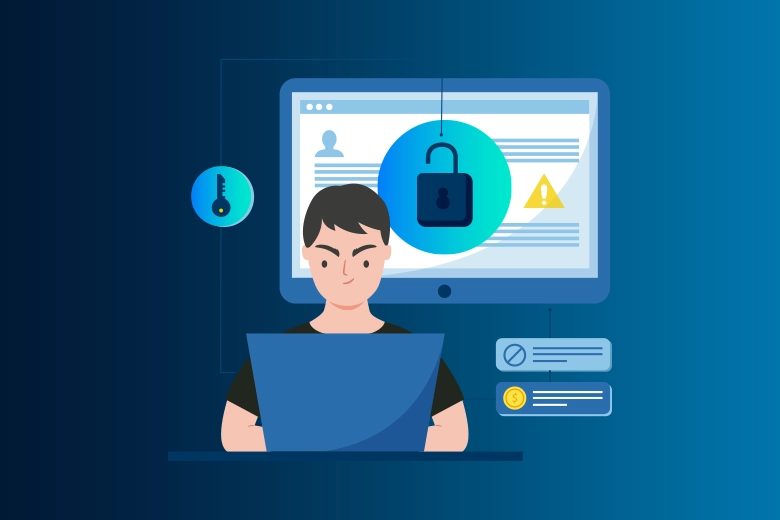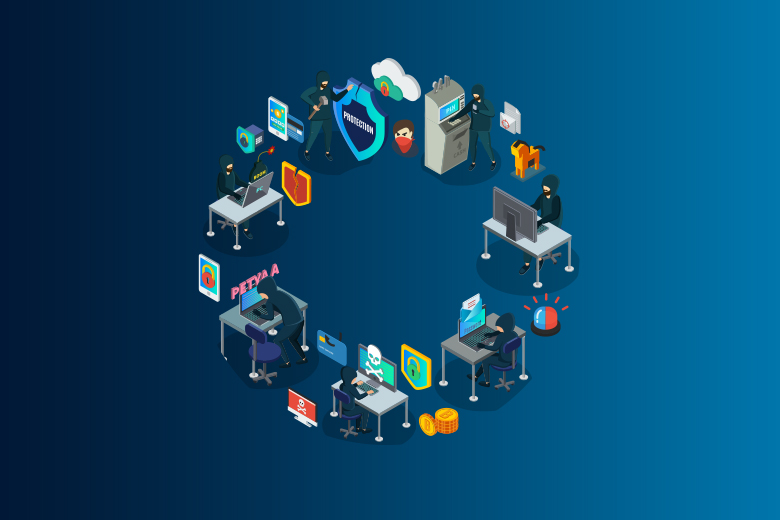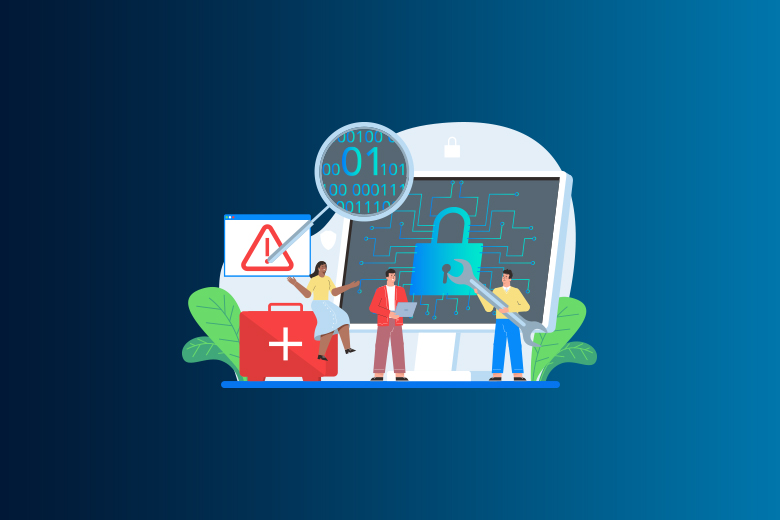05 February 2024
SafeAeon Inc.The digital age has brought about a scary truth: ransomware attacks are becoming more and more common. These are attacks where bad people lock your data and demand a price to unlock it. According to a study from 2023, ransomware attacks are getting worse. They are up 82% year-over-year and cost victims an average of $4.6 million each. As the water level rises, the question that stands out: how do you get your data back after a ransomware attack? The answer comes in effective remediation strategies, which are like a road map to recovery and strength.
Imagine how shocking it would be to find that your important files had been secured and replaced with a rude ransom note. The terrifying thought of having to pay the ransom or risk losing everything comes to mind. But before you give up and give up hope, think about this: proactive, well-defined remediation methods can save your data and organization from becoming infected.
This guide goes into detail about how to recover from ransomware and looks at a range of choices besides just giving in to the attackers' demands. We'll give you the information and tools you need to handle this situation well, from the important role of backups to the delicate dance of negotiation. Remember that you have a much better chance of getting your data back and limiting the damage if you follow the right plan and get professional help. So, come with us as we give you the tools to face the ransomware threat head-on, not out of fear but with knowledge, strength, and the determination to come out on top.

What is Redemption?
Remediating ransomware is like cleaning up after an oil spill: it's a careful, all-encompassing process meant to completely get rid of ransomware from network systems that have been affected. This process is complicated and takes many steps to make sure that every damaged part is properly fixed.
The problem with getting rid of ransomware is that it can often stay in systems for a long time, making it hard to get rid of completely. Either wiping the infected systems clean or restoring them from backups is usually the most effective way to get rid of them. When neither of those options works, it's best to use specific tips for getting rid of certain types of ransomware.
Step 1: Identifying the Infected Device
If you think you might have ransomware, stop all online activities and logins right away to keep the attacker from getting more private information.
The next very important step is to find out which devices have been infected with ransomware. Signs of an illness include the following:
- Battery life quickly runs out
- Slow system performance
- Installation of tools that you don't know
- Making new accounts for unknown users
- Strange patterns of network traffic
- Changes or changes to backup files
- An unexpected rise in disk usage
Changing saved files in particular can have very bad financial effects. It is very important to keep malware away from your backups to keep your data safe and intact.
Step 2: Isolating the Compromised Device
Remove the affected device(s) from your network right away to stop the ransomware from spreading. This can be done by:
- By removing the Ethernet cable, for example, you can disconnect the infected gadget from the internet.
- If multiple computers or parts of the network are hacked, you might want to turn off the network at the switch level.
- Isolate important systems that are needed for daily activities.
- Keep in mind that the attacker may still watch the device's activities after isolating it to see if their presence has been discovered.
Step 3: Identifying the Ransomware Variant
To successfully deal with the infection, you need to know exactly what kind of ransomware you're dealing with. Some common types of malware are
- Crypto Ransomware: This type of software locks your files and demands a ransom to allow you to access them. The attacker usually sets a payment limit and threatens to delete or publicize the data if it is not paid by that date. Affected files can still be seen but cannot be opened.
- Scareware: It's fake software that sends you a lot of false alerts about problems on your computer and asks for money to fix problems that don't exist. You might get locked out of the system or get too many pop-up alerts.
- Locker Ransomware: This type of ransomware locks you out of your computer and only lets you pay the ransom. It usually locks out the desktop, but the computer and mouse can still be used in some ways. Locker ransomware's main goal is to keep users from accessing their files, so it's not likely to completely delete them.
To find the ransomware, you need to keep an eye out for strange gadget behavior or ransom messages.
Step 4: Exploring Remediation Strategies
When you have malware, the way to get rid of it depends a lot on the tools and resources you have available. Take a look at these approaches:
- Do It Yourself Removal: Use available cybersecurity tools and instructions to try to get rid of the ransomware attack on your own.
- Restoration from copies: To get your systems back to the way they were before the infection, use clean, recent copies.
- Ransomware Recovery Services: Hire experts who offer Ransomware Recovery as a Service to help you get back to normal quickly.
- Paying the Ransom: Some organizations may think about paying the ransom as a last option, even though it is controversial and usually not a good idea.
A big 59% of ransomware victims didn't pay the ransom in 2022. They weren't sure if they would get their data back, and their insurance plans required them to make better backups. These protocols have made it much easier for businesses to recover from attacks like these without giving in to ransom requests.
Step 5: Notifying Relevant Parties
There are several things to think about if you decide not to pay the fee. No matter what you decide, you need to let the right people and groups know about it quickly. Among these are:
- Reporting to Law Enforcement: To help track down and stop ransomware threats, let the FBI, CISA, or the U.S. Secret Service know about the event.
- Getting in touch with stakeholders: Notify everyone involved, both inside and outside the company. Make a clear and logical communication plan to handle the situation well.
These steps not only help you deal with a ransomware attack right away, but they also help with larger attempts to fight these cyber threats.
How To Prevent Ransomware Incidents in the Future?
Although completely eliminating the risk of malware attacks is challenging, adopting a proactive stance is crucial. This approach towards ransomware prevention safeguards your network against future incidents. Start by:
Assessing Potential Weaknesses: Conduct thorough evaluations to identify vulnerabilities. Focus on your devices and network infrastructure.
Enhancing Your Ransomware Response Strategy: Aim to improve your protocols continuously. This ensures swift and effective action in the event of an attack.
Partnering with a Managed Service Provider (MSP): Collaborate with an MSP for continuous monitoring. This bolsters your defenses against potential ransomware threats.
The Best Approach For Redemption
Option 1: Use backup and recovery.
Finding and restoring files from a backup is the safest way to stop a ransomware attack without paying the fee. Restoring affected systems to the most recent safe state shows how important it is to have a complete backup plan that is checked regularly as a key part of any successful defense against ransomware. Keep in mind that not all data protection solutions will keep your backups safe during an attack, which means they could be hacked. It is highly suggested that you pick a solution that can stop ransomware from changing your backups while also allowing for quick recovery and better monitoring.
Option 2: Look for a decryptor tool.
If you know what kind of ransomware you have, you might be able to find a recovery tool from outside sources. But as new ransomware types change quickly and become more complicated, the chances of finding a good decryptor are going down. Using a decryptor from a third-party source that hasn't been checked out also runs the risk of adding more malware, so this method is neither safe nor advised.
Option 3: Be okay with losing data.
For businesses that didn't have a good backup plan before an attack or that couldn't find a decryptor, not trying to get the files back may seem like the only choice. But it is very important to then focus on creating, testing, and implementing a full ransomware recovery plan so that things can be fixed quickly if they happen again.
Option 4: Think about paying a ransom.
If all other attempts to get the files back have failed, paying the ransom might look like the only thing left to do. However, both the FBI and computer experts say that people shouldn't pay ransoms because they can't be sure that their data will be returned after they do.
Conclusion
To sum up, getting rid of ransomware remediation takes a multifaceted approach that includes quick response to incidents, thorough system analysis, and long-term planning for recovery. Organizations can lessen the damage from ransomware attacks by restoring key systems first, using data backups, and using decryption tools when they are available. Also, analyzing what happened after an incident and putting in place strong cybersecurity means are very important for stopping future breaches. Key parts of a strong defense plan are educating users about the risks of ransomware and keeping security protocols up to date. By using these cleanup methods, businesses get the tools they need to respond to and recover from ransomware attacks quickly. Stay in touch with SafeAeon to seek seamless digital space freedom with top-notch cyber security.














